18 Wild Animals in Zambia [Wildlife in Zambia]
Want to know more about the wildlife in Zambia?
Discover 18 wild animals in Zambia in this post, as well as interesting facts about them. 🇿🇲
Learn All About Zambian Animals
Ready to learn all about Zambian animals?
I’ve always been fascinated by animals, and by how they can be so different from one country to another. In this guide, we’ll focus on the many animals Zambia has on the land, in the sky, and underwater.
I’ve split the guide into 4 categories:
- Native animals from Zambia
- Endangered animals of Zambia
- What is the Zambia national animal?
- How many animals native to Zambia?
Let’s dive in right away with our first category!
Native Animals from Zambia
Zambia is a landlocked African country located in the southern part of the continent. It is home to large quantities of natural resources such as minerals, freshwater, arable land, and wildlife, is one of the world’s fastest economically reformed countries, and used to be a British colony. It is bordered by the Democratic Republic of the Congo, Malawi, Tanzania, Botswana, Zimbabwe, Mozambique, Namibia, and Angola, and its capital and largest city is Lusaka, which counts more than 1,747,000 inhabitants (but more than 2,731,000 if you include the metropolitan area).
An interesting part of the country that I wanted to tackle is its wildlife. In light of that, I have listed the best of it, and I hope you will love learning what animals live in Zambia.
Here’s the Zambia animals list.
1. Black rhinoceros
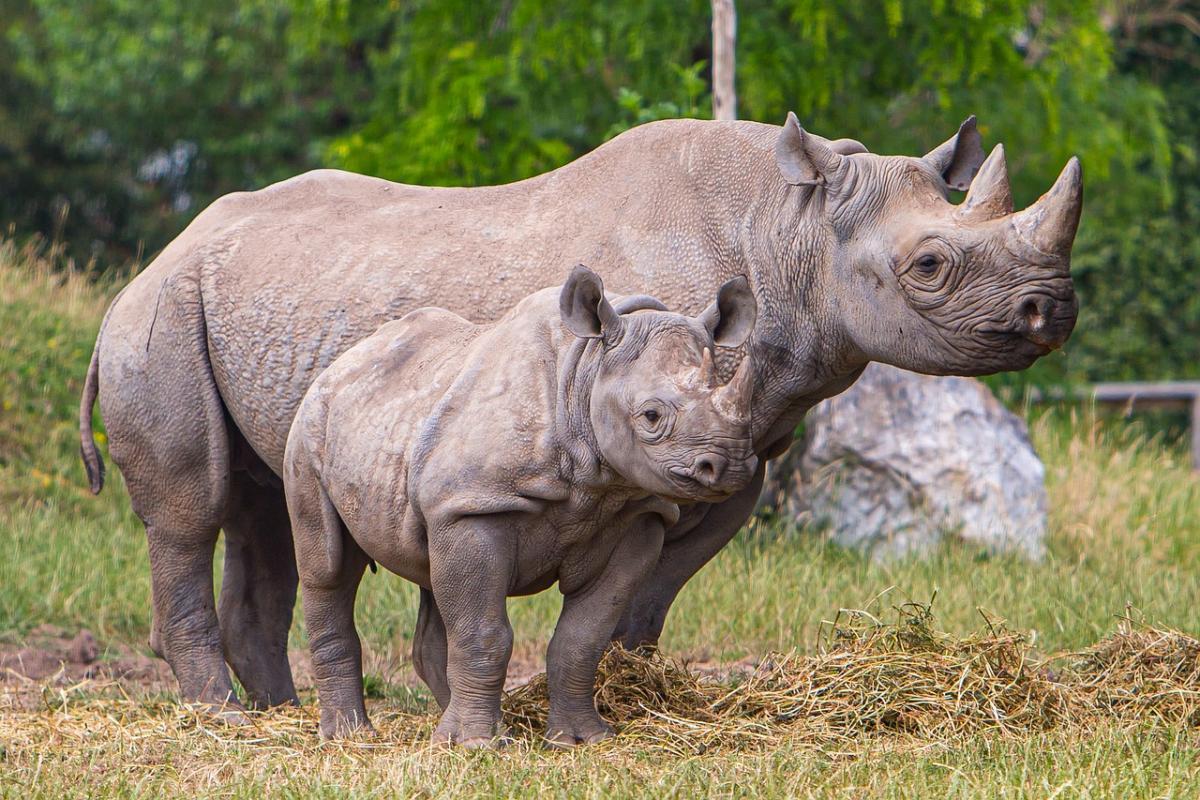
- Name: Black rhinoceros
- Scientific name: Diceros bicornis
- Conservation status:
The black rhinoceros, also known as the black rhino or the hook-lipped rhinoceros, is a species of rhinoceros native to southern and eastern Africa. Although its populations are slowly on the rise again, it is still severely threatened, and on the verge of extinction.
In Zambia, it had become extinct in 1998 but was reintroduced in 2008, in North Luangwa National Park. It is generally a solitary animal, except for the bond between a mother and her calf.
2. African bush elephant
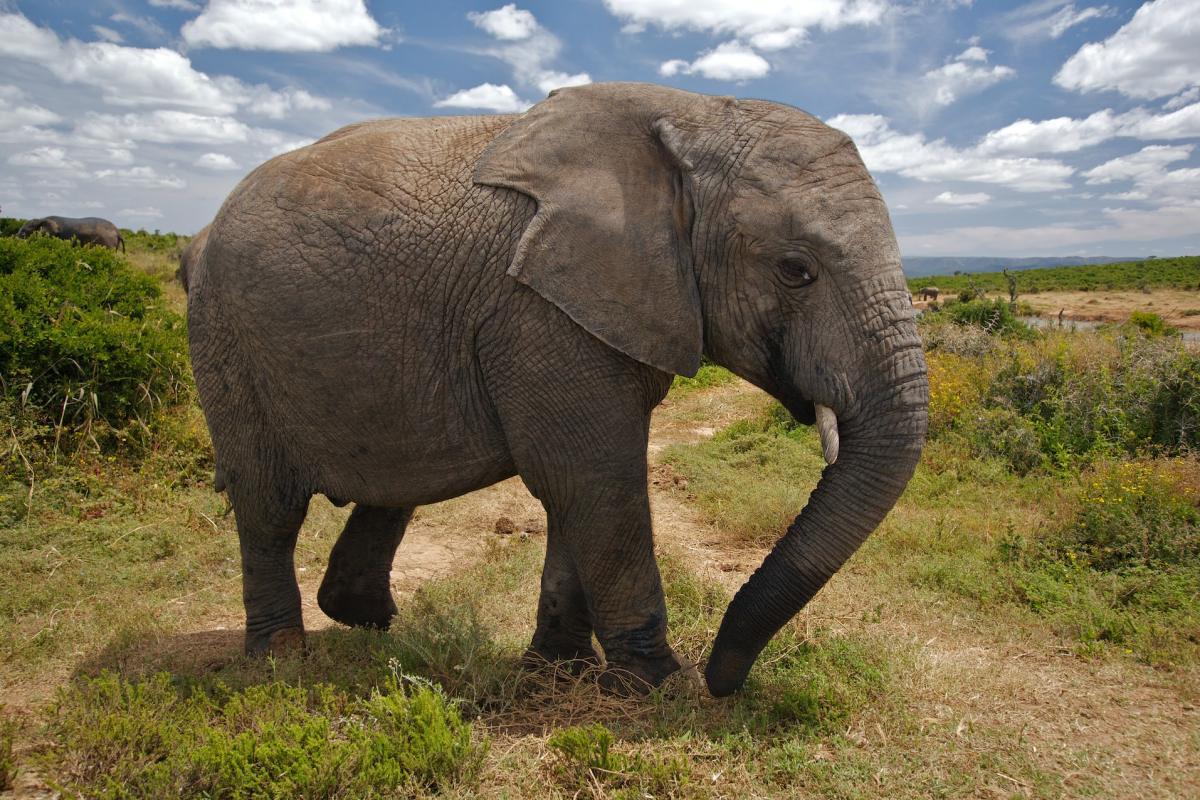
- Name: African bush elephant
- Scientific name: Loxodonta africana
- Conservation status:
The African bush elephant, also known as the African savanna elephant, is the largest terrestrial animal in the world. It can be found across 37 African countries, where it inhabits grasslands, savannas, forests, woodlands, and wetlands, but is sadly seriously endangered by habitat loss and poaching; in Zambia, it can only be found in parks, just like the lion.
Zambia is a particularly problematic country for the poaching of African bush elephants, illegally exporting tonnes of ivory every year, usually to Asia for traditional medicine.
3. Southern African lion

- Name: Southern African lion
- Scientific name: Panthera leo melanochaita
- Conservation status:
Similarly to the African bush elephant, the Southern African lion, also simply known as the Southern lion, is restricted to national parks in Zambia, although it used to be much more common and widespread in the country.
The populations of this majestic animal have been increasing in heavily protected areas since the turn of the 21st century, but largely declined in eastern African countries, as well as in Zambia and Malawi due to illegal hunting.
4. African buffalo
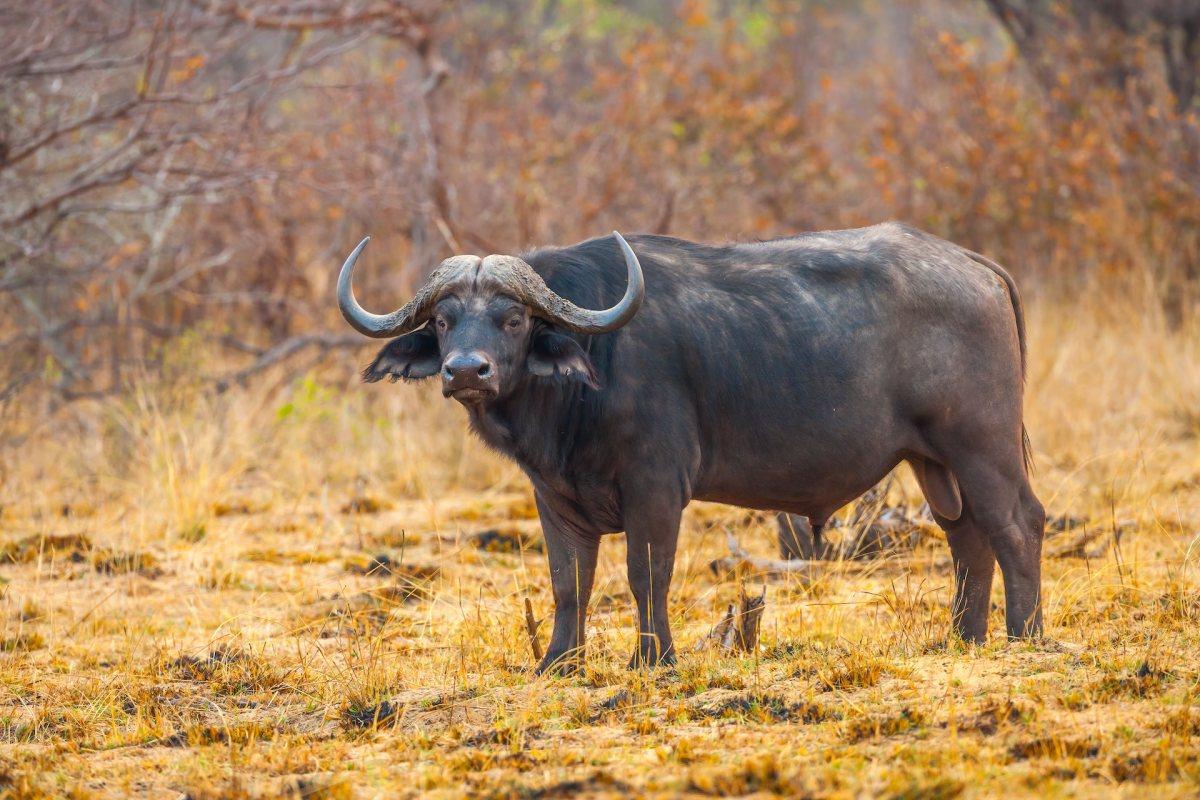
- Name: African buffalo
- Scientific name: Syncerus caffer
- Conservation status:
The African buffalo is a large species of bovine native to much of sub-Saharan Africa. Usually, it stays near bodies of water, and it has a large bone shield on top of its head.
Believe it or not, it is one of the most dangerous animals on the entire African continent, being known to attack, gore, trample and kill humans (more than 200 people each year!). This easily explains why it has never been domesticated.
5. Spotted hyena
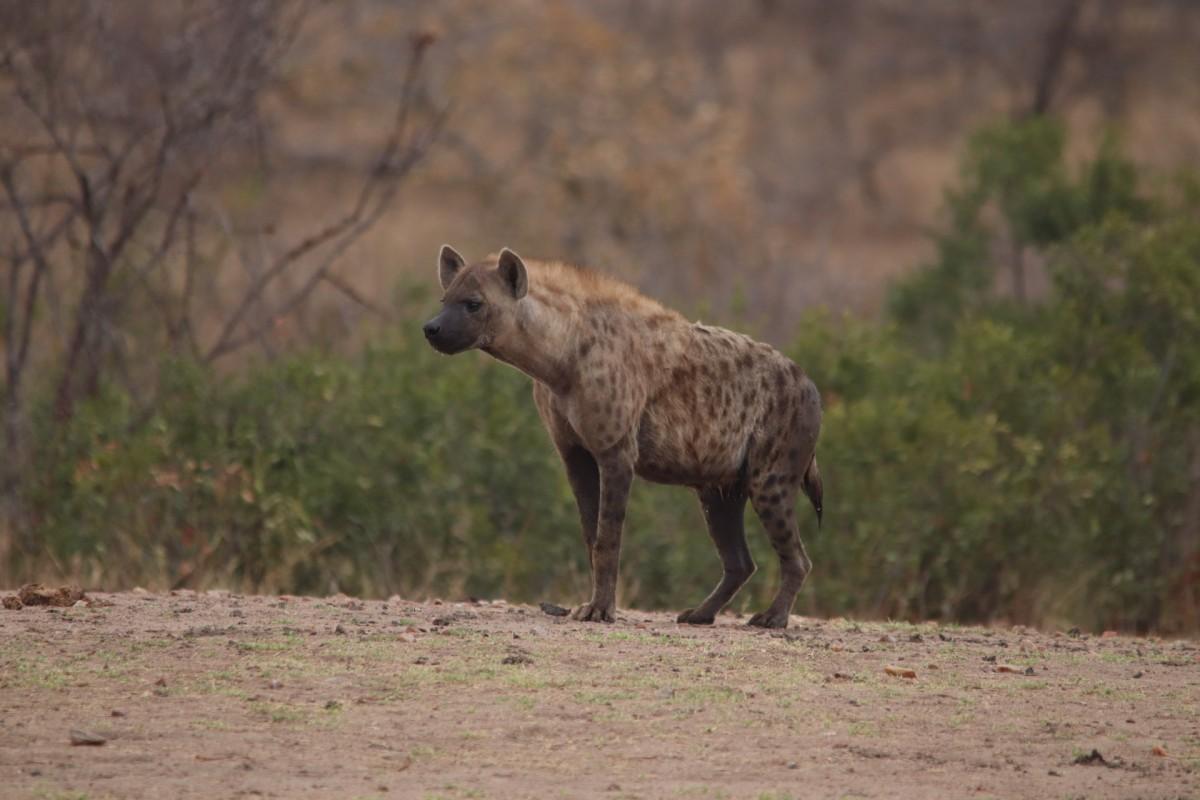
- Name: Spotted hyena
- Scientific name: Crocuta crocuta
- Conservation status:
The spotted hyena, widely known as the laughing hyena, is a species of carnivore native to almost all of sub-Saharan Africa. There, it is the most common large carnivore due to its high adaptability and opportunism; despite what most people think, it is primarily a hunter and not a scavenger.
However, depending on the area of its range, the spotted hyena behaves differently. In fact, it is considered a scavenger in Zambia!
6. Nile crocodile
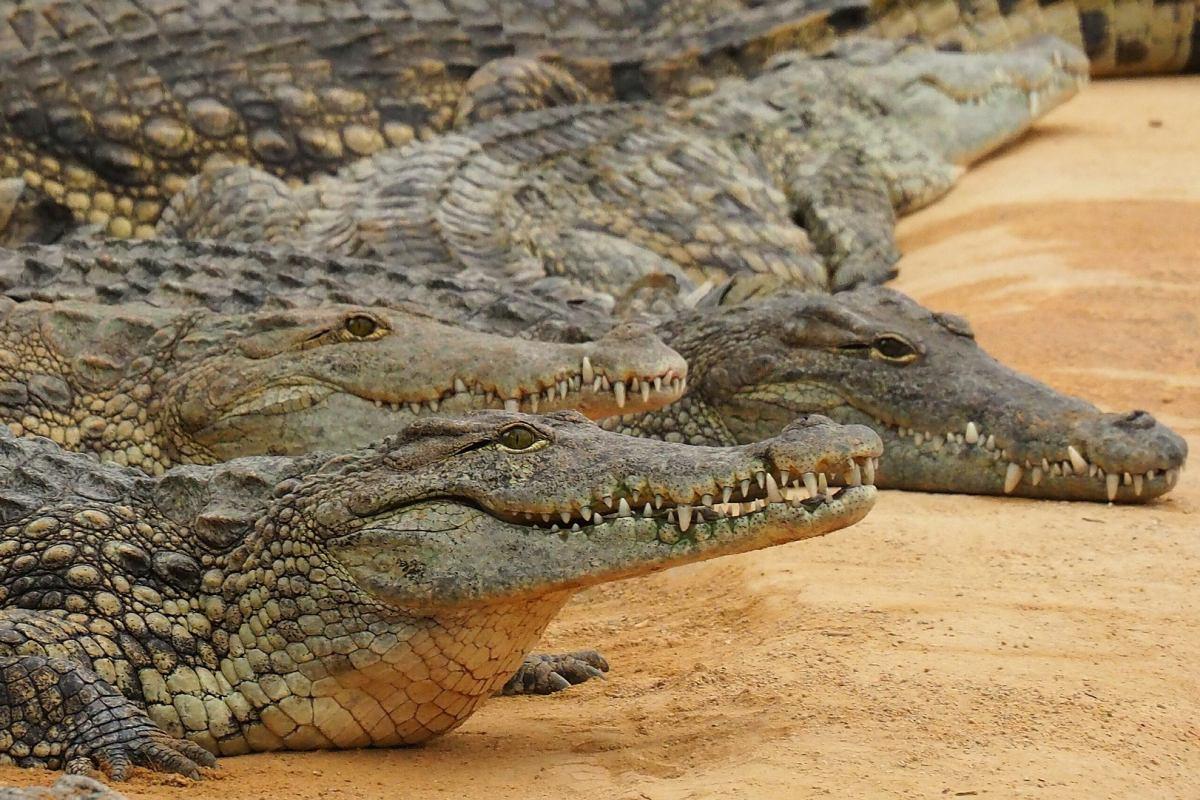
- Name: Nile crocodile
- Scientific name: Crocodylus niloticus
- Conservation status:
The Nile crocodile is a large species of reptile native to the freshwater habitats of all of sub-Saharan Africa, and not only around the Nile River. It inhabits the rivers, swamps, marshlands, and lakes of Zambia, and is a powerful, opportunistic apex predator with very aggressive behavior, making it particularly dangerous.
The region around Lower Zambezi National Park is one of the places in which the Nile crocodile strikes most, attacking women and children.
7. Hippopotamus
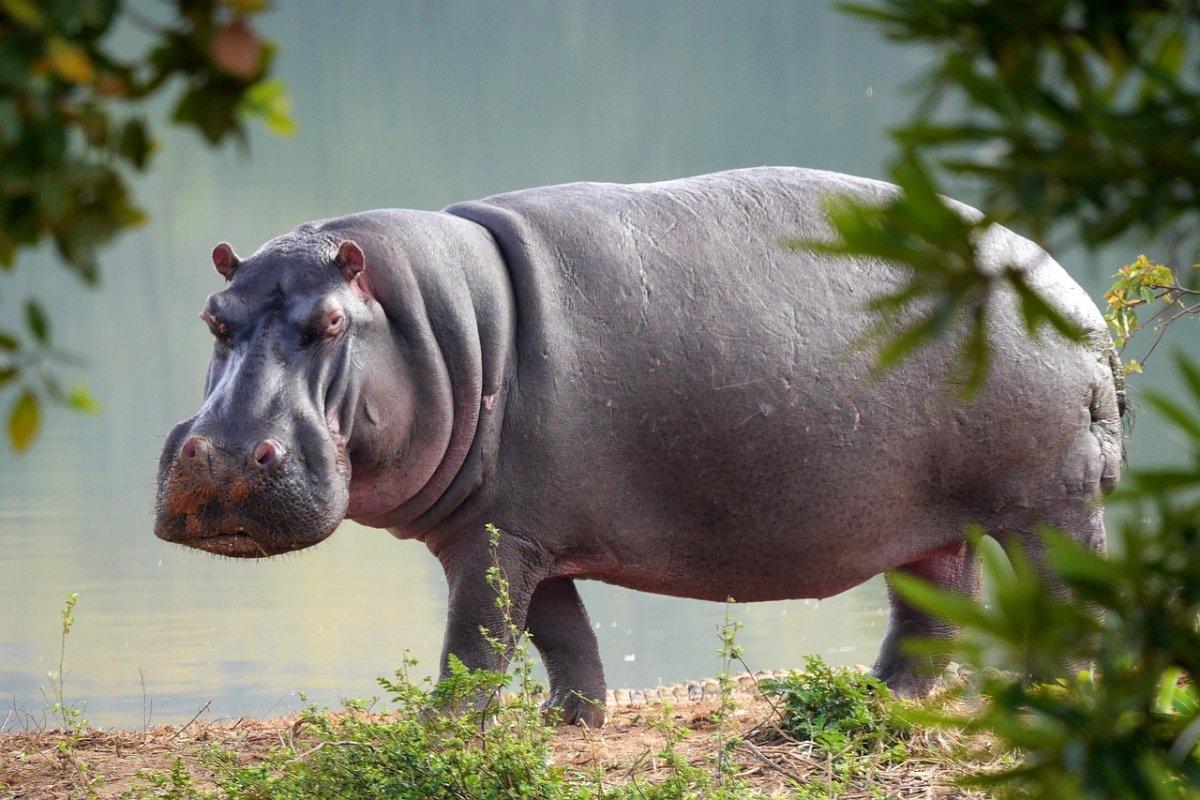
- Name: Hippopotamus
- Scientific name: Hippopotamus amphibius
- Conservation status:
The hippopotamus, also known as the river hippopotamus, the common hippopotamus, or simply the hippo, is a very large species of semi-aquatic ungulate native to much of sub-Saharan Africa, although its range is now much more fragmented than it used to be. Similarly to the African buffalo, it is particularly unpredictable and highly aggressive and is thus very dangerous.
Zambia is home to the largest population of hippopotamus in the world, with about 40,000 individuals.
8. Lechwe
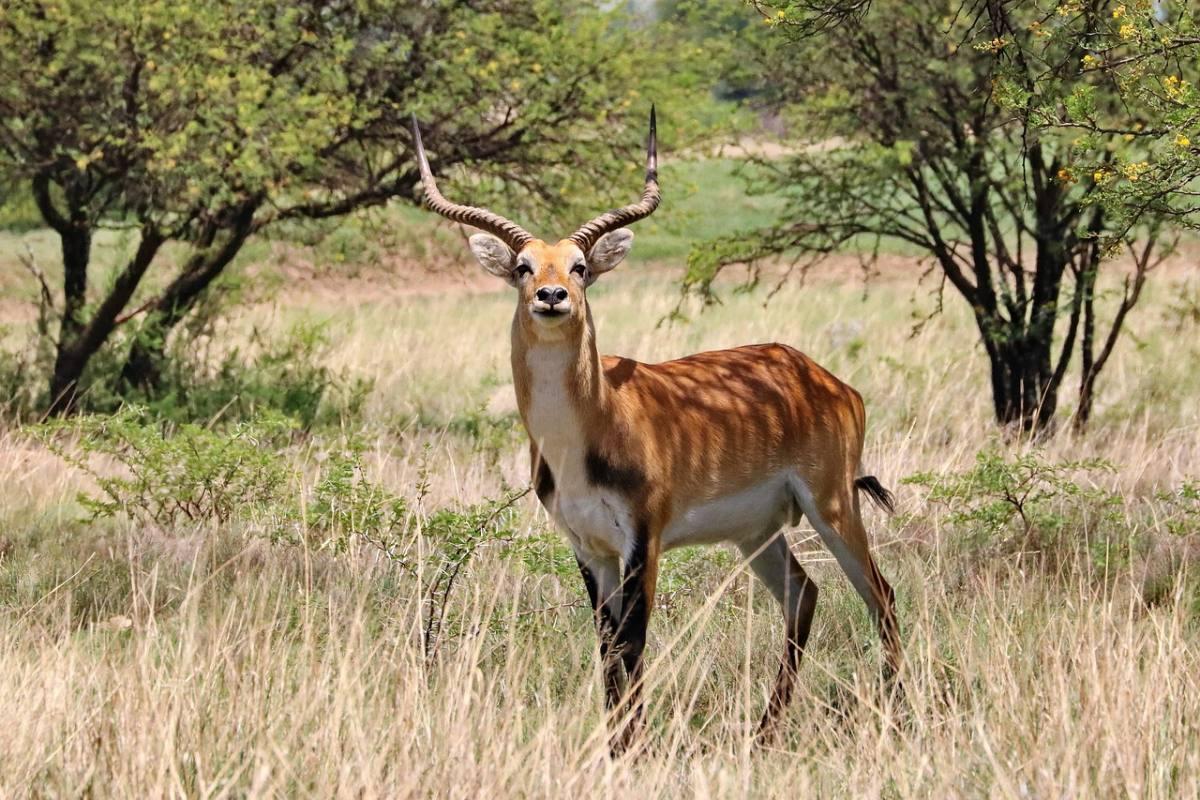
- Name: Lechwe
- Scientific name: Kobus leche
- Conservation status:
The lechwe, also known as the southern lechwe or the red lechwe, is a species of antelope native to the wetlands of southern central Africa, including Zambia, the Democratic Republic of the Congo, Namibia, and Botswana. In animal farms and zoos, it is pretty common, but less so in the wild.
In Zambia, the lechwe can be found in large numbers, even outside parks. It lives in herds in the marshy areas of the country and feeds on aquatic plants.
9. Kinda baboon
- Name: Kinda baboon
- Scientific name: Papio kindae
- Conservation status:
The Kinda baboon is a species of baboon found in Zambia, the Democratic Republic of the Congo, Tanzania, and Angola. Previously considered a subspecies of the yellow baboon, it is now distinct.
This primate is golden and has long fur. It is the smallest baboon in the world, and hybrid individuals (with the yellow baboon) are known in northeastern Zambia. It gathers in multisexual groups, which can comprise more than 100 members.
10. African leopard
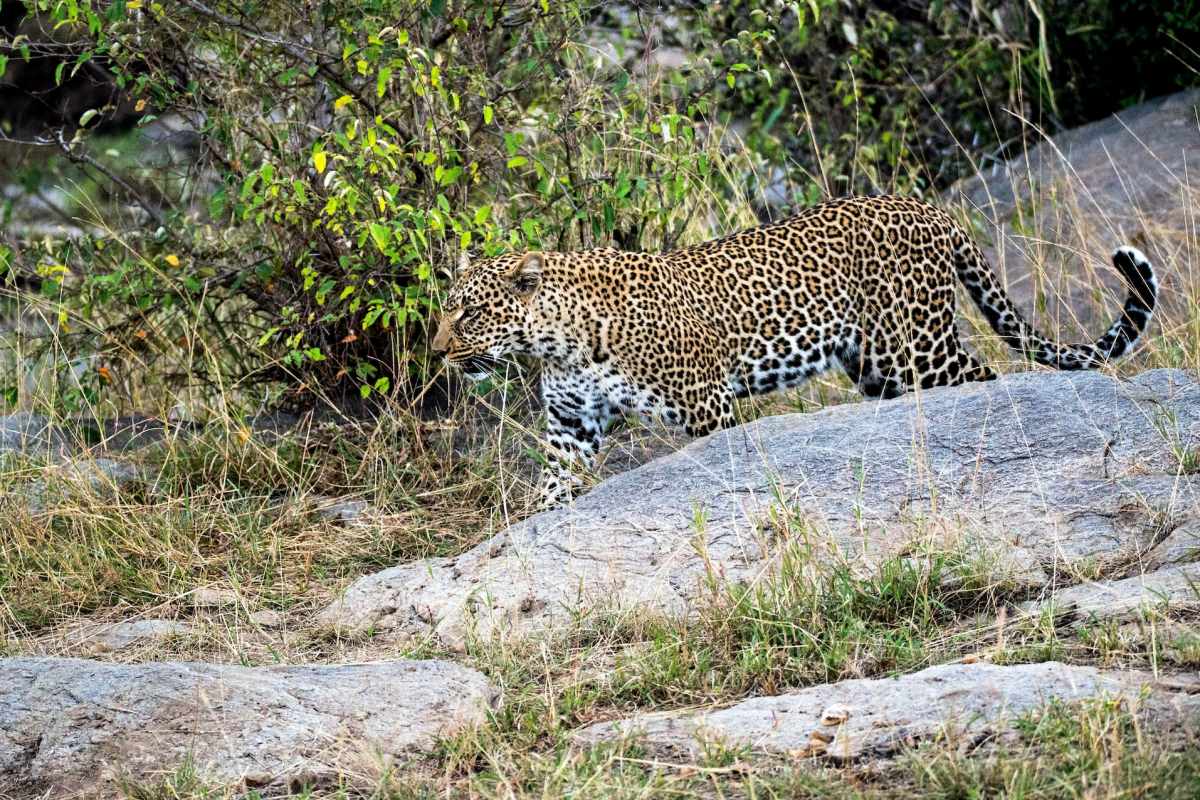
- Name: African leopard
- Scientific name: Panthera pardus pardus
- Conservation status:
The African leopard is the most common and widespread subspecies of the leopard. It can be found in multiple sub-Saharan African countries, but its range has been fragmented over the course of history.
In Zambia, it is a fairly common animal, but hides particularly well and is thus seldom seen. It is active by night, and hides among grasses before jumping on its prey, sometimes much larger than itself; in fact, it is also considered a problem in some remote villages.
11. Southeast African cheetah
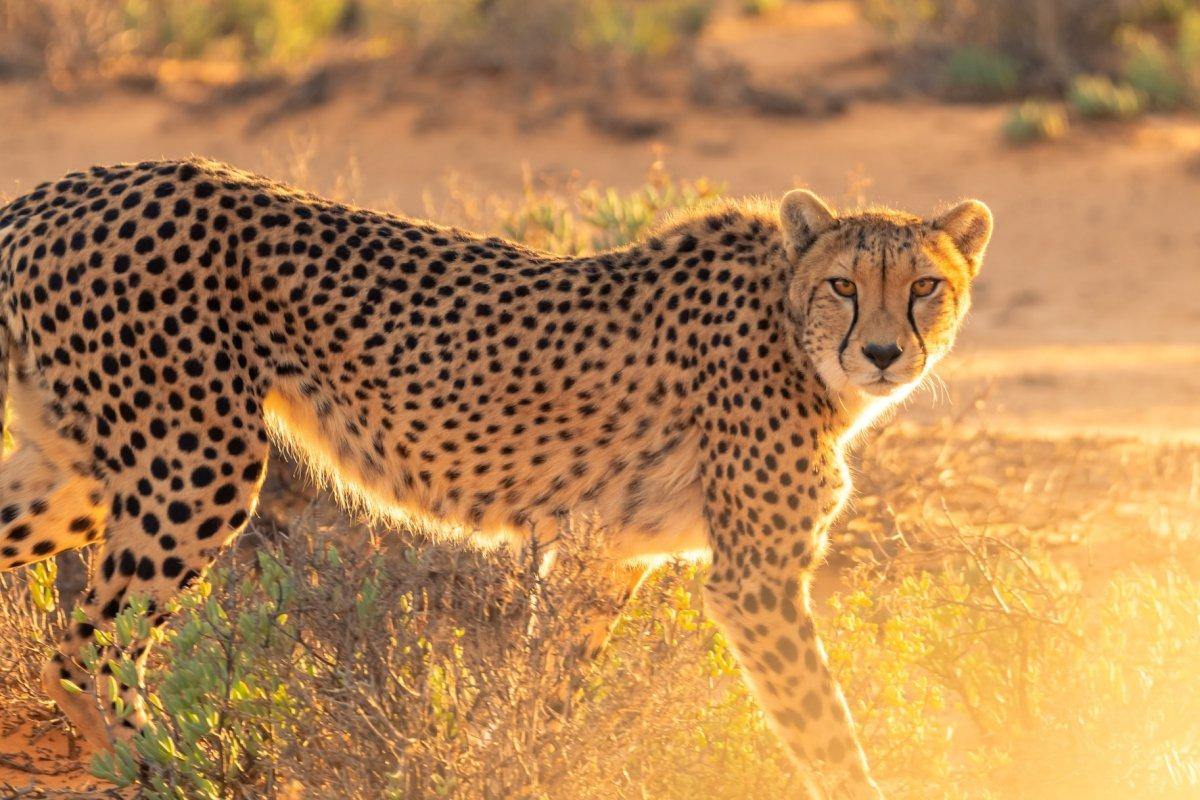
- Name: Southeast African cheetah
- Scientific name: Acinonyx jubatus jubatus
- Conservation status:
The cheetah is known to be the fastest terrestrial animal in the world, with a large but athletic body. The Southeast African cheetah is one of its subspecies, and it can be found only on the plains of northern Kafue in Zambia, where it hunts during the day but is rarely sighted. There are about 100 individuals in the country, and they are all vulnerable to habitat loss and poaching.
Although extremely rare, a melanistic individual was spotted in Zambia.
12. Plains zebra
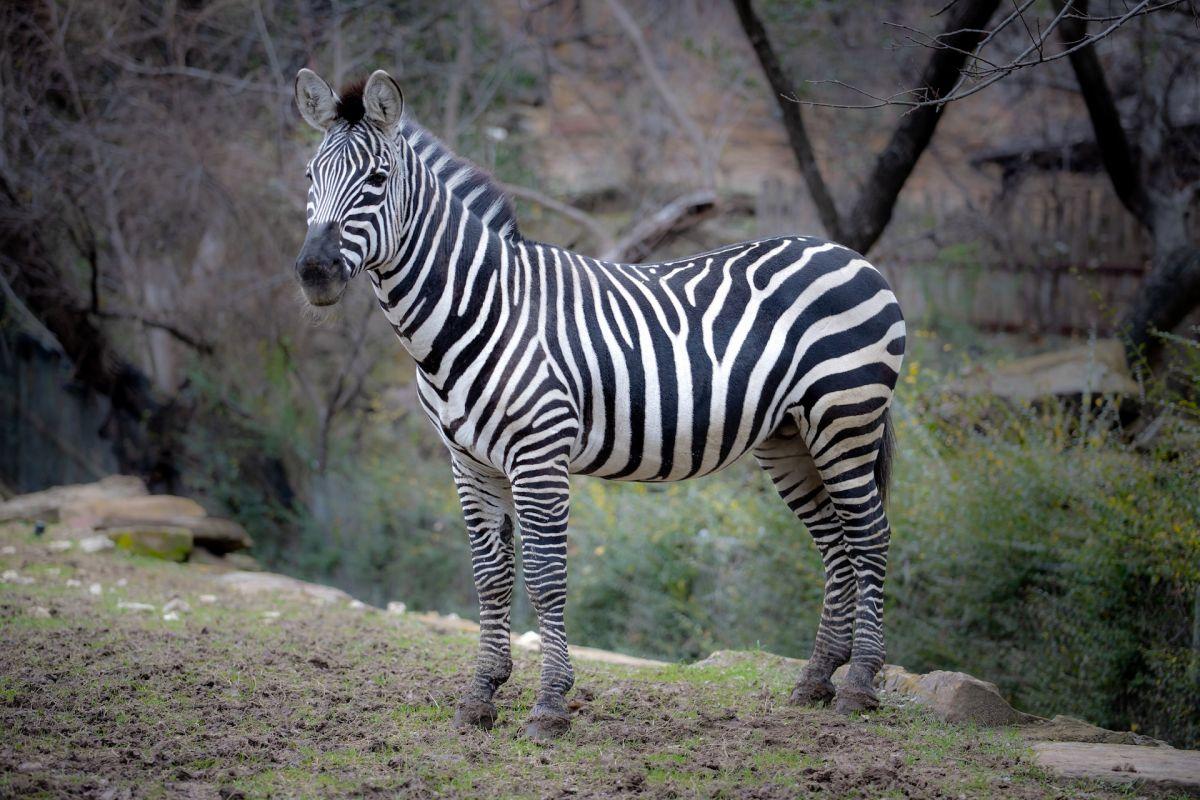
- Name: Plains zebra
- Scientific name: Equus quagga
- Conservation status:
The plains zebra, also known as the common zebra, is the most widespread and common species of zebra. It can be found throughout much of southern and eastern Africa, but its range is fragmented.
In Zambia, the plains zebra is very common and can easily be seen in most parks, usually in large herds with wildebeest. Outside of reserves, it is seriously threatened by hunting for its hide and meat, competition with livestock, and agricultural encroachment.
13. Rhodesian giraffe
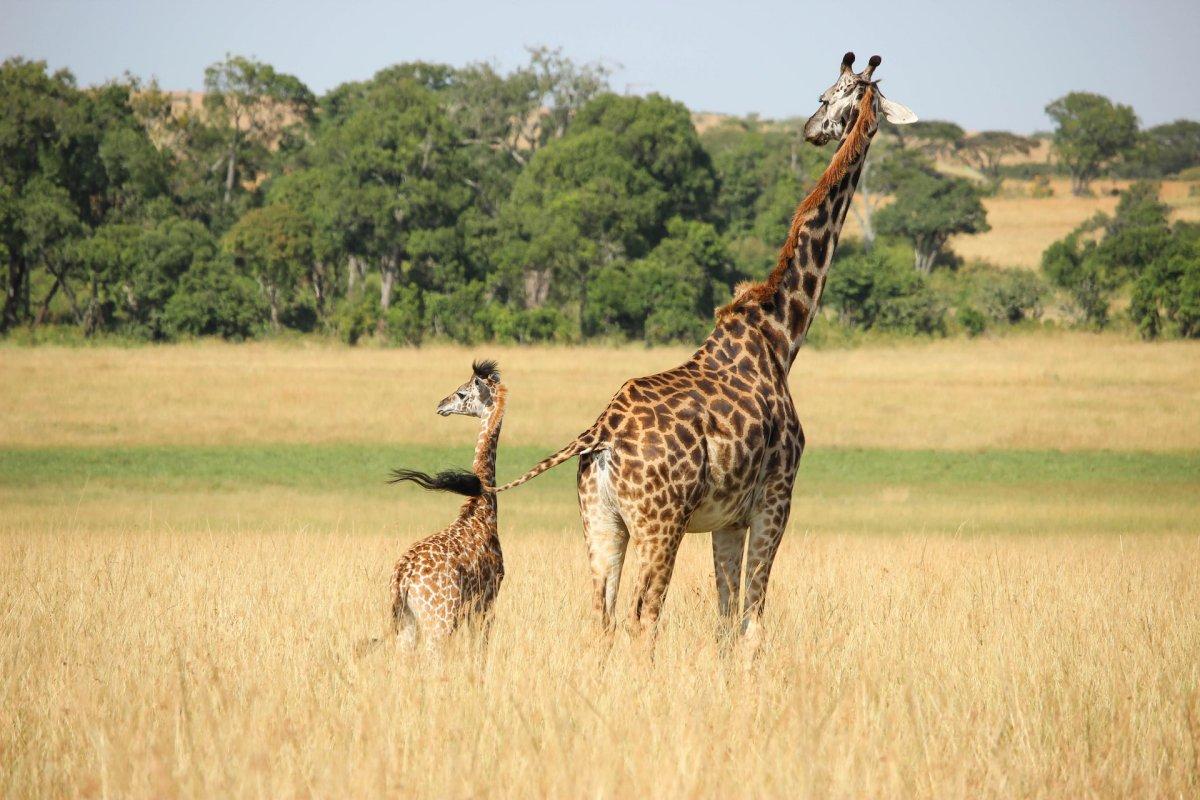
- Name: Rhodesian giraffe
- Scientific name: Giraffa camelopardalis thornicrofti
- Conservation status:
The Rhodesian giraffe, also known as Thornicroft’s giraffe, is a subspecies of giraffe endemic to Zambia. It lives in herds with a very flexible social system and can be found in the dry savanna and arid regions of the country.
This giraffe can live up to 28 years (for females, while only 22 years for males), and it feeds on leaves and shoots of shrubs and trees. It breeds throughout the year and is sexually mature at the age of 6 years.
14. Blue wildebeest
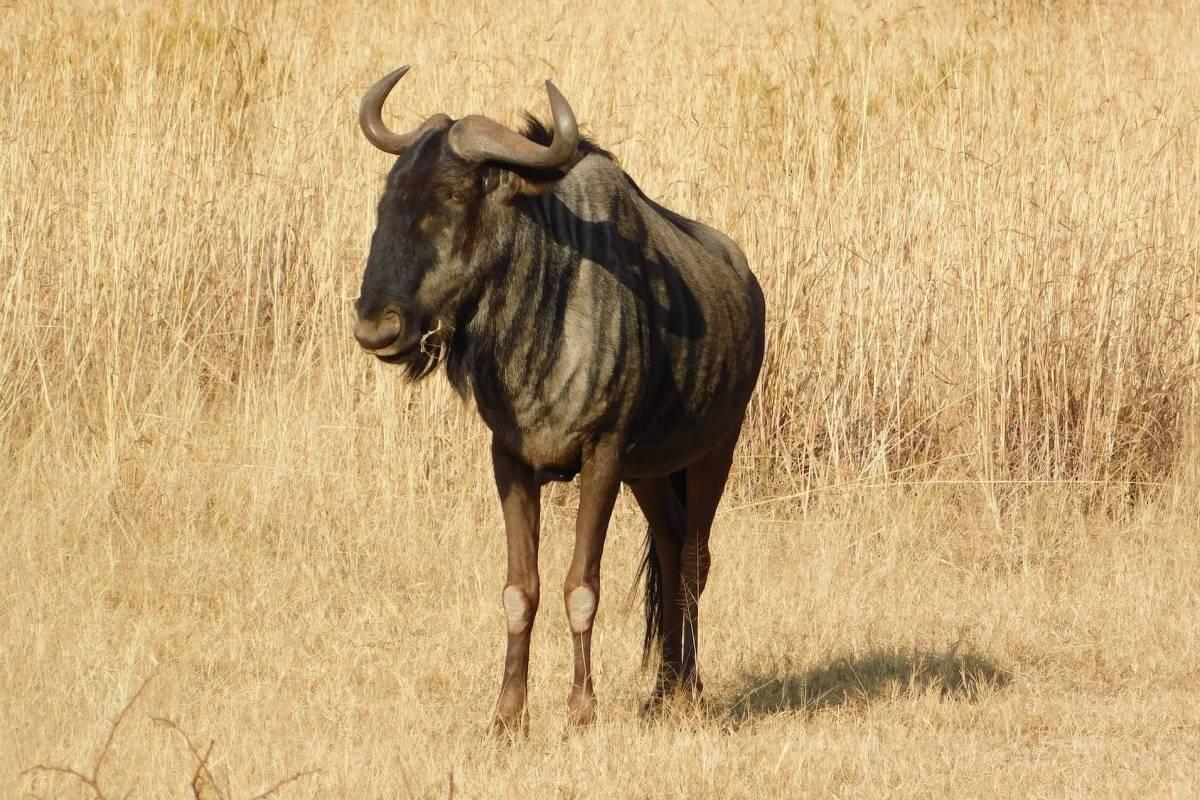
- Name: Blue wildebeest
- Scientific name: Connochaetes taurinus
- Conservation status:
The blue wildebeest, also known as the white-bearded gnu or the brindled gnu, is a large species of antelope native to southern and eastern Africa, where it is extremely common and widespread: there are about 1.5 million individuals in the wild, and this number remains relatively stable.
In Zambia, just like in any other country, the blue wildebeest is very common and lives in large herds. It is active during the early hours of the day and the late afternoon and rests during the hottest hours.
15. Aardvark
- Name: Aardvark
- Scientific name: Orycteropus afer
- Conservation status:
The aardvark is a medium-sized species of mammal native to all of sub-Saharan Africa. While you might have never heard of it, it is known for its characteristic pig-like snout, which is ideal to sniff out food (almost exclusively ants and termites, which it digs out of their hills with its incredibly powerful claws).
This mammal is very important to other animals, as it constructs burrows often taken by them, and provides shelter to a lot of species.
16. Ground pangolin
- Name: Ground pangolin
- Scientific name: Smutsia temminckii
- Conservation status:
The ground pangolin, also known as the steppe pangolin, the Cape pangolin, or Temminck’s pangolin, is a large species of pangolin found in eastern, central, and southern Africa. It is considered vulnerable to extinction but is not the most threatened of the pangolins, which are generally extremely endangered.
This peculiar mammal is covered in large, protective scales and exclusively feeds on ants and termites. It is particularly selective and only eats specific ant and termite species as well.
17. Savannah monitor
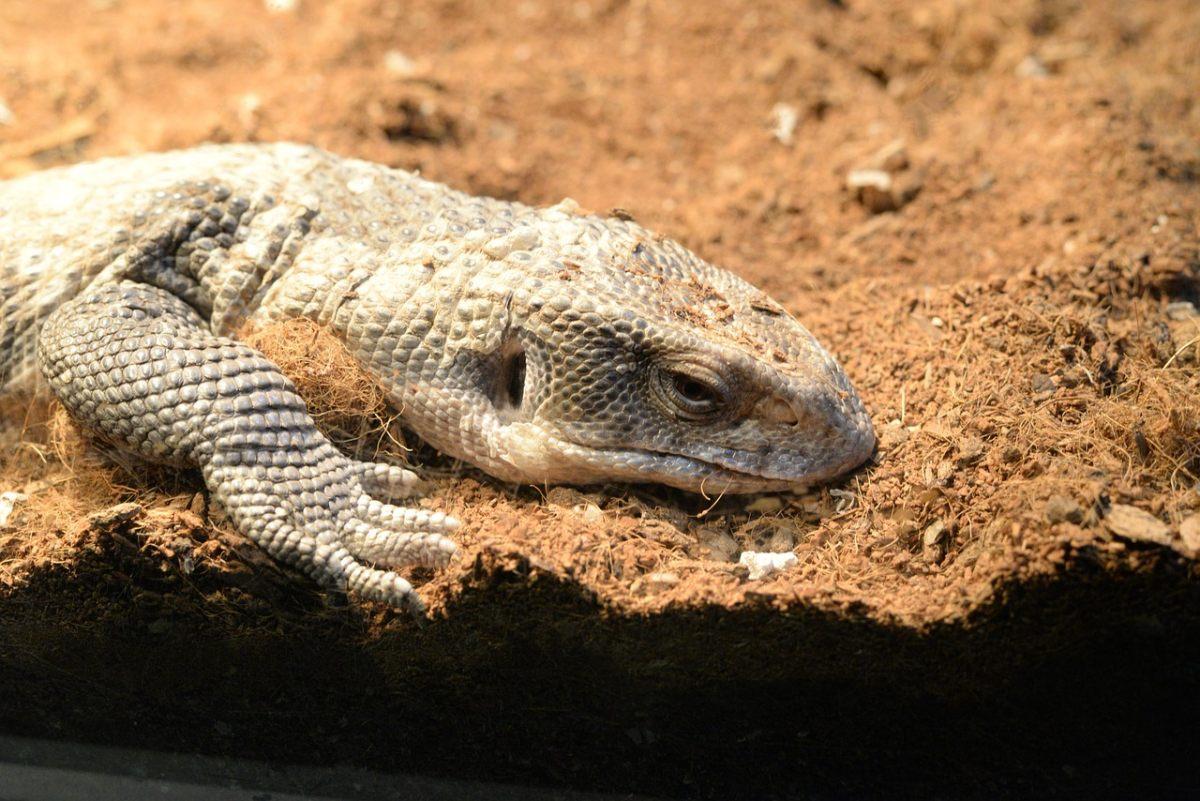
- Name: Savannah monitor
- Scientific name: Varanus exanthematicus
- Conservation status:
The savannah monitor, also known as Bosc’s monitor, is a medium-sized species of monitor lizard native to sub-Saharan Africa, from Senegal to Sudan and as far south as the Congo River and the Rift Valley. It is a terrestrial animal that shelters in burrows.
Due to these burrowing habits, the savannah monitor is particularly difficult to observe. It is common in the grasslands and savannas of Zambia and feeds on mollusks and arthropods.
18. Black mamba
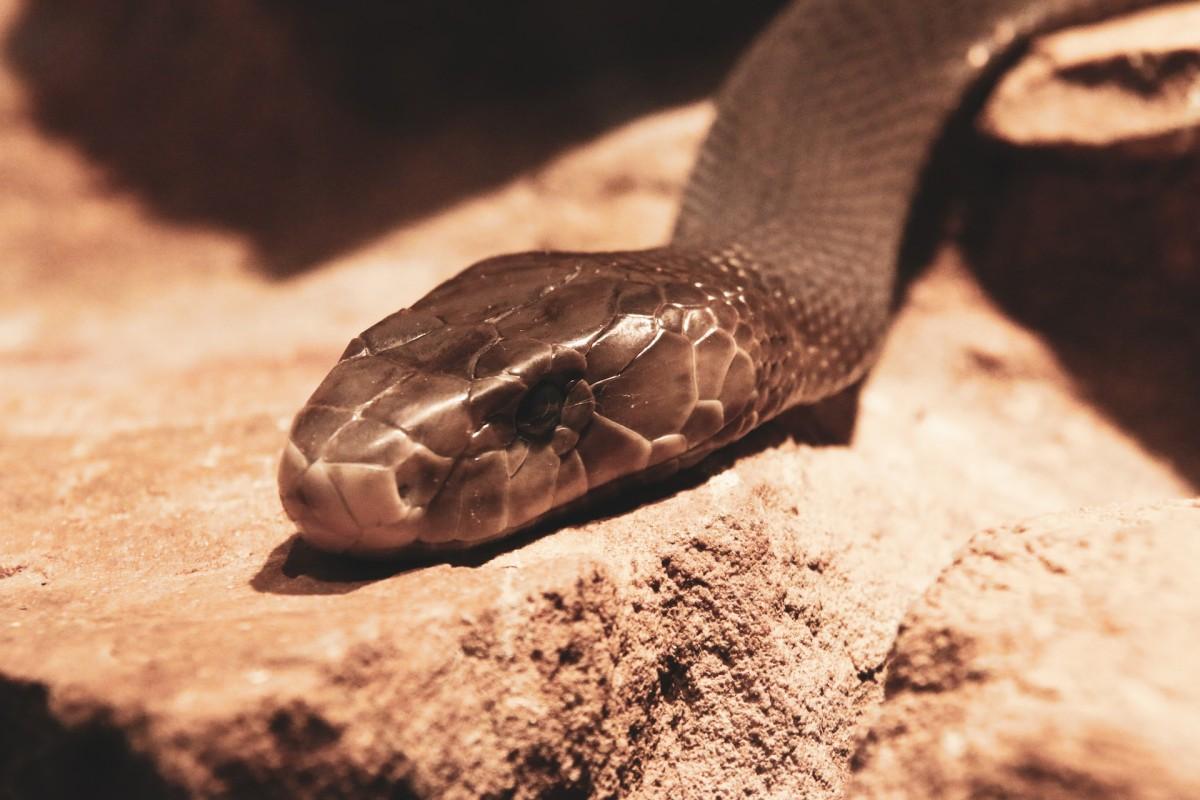
- Name: Black mamba
- Scientific name: Dendroaspis polylepis
- Conservation status:
Last but not least, there is the black mamba in Zambia, one of the most feared and dangerous snakes in the world. In fact, it is pretty common in most rural areas of the country, and it is a large, fast-moving, and venomous snake with a particularly potent venom and known aggressive behavior.
As its name suggests, it has an inky-black mouth. It is the second-longest venomous snake in the world after the king cobra, often reaching more than 3 m / 9 ft 10 in long.
—
So there you have them, these were my 18 wild animals in Zambia. I hope you enjoyed this list and that you learned something new today.
In case you want to learn more about Zambia wildlife, feel free to keep reading, as I still have lots of things to tell you about:
Endangered Animals of Zambia
This is definitely the saddest part of the list, but it is very important to raise awareness. Because of this, let’s go through the list of endangered animals in Zambia.
Here are the animals in danger of extinction in Zambia.
- None
- Pancake tortoise
- Hooded vulture
- Black rhino
- White-winged flufftail
- Slender-snouted crocodile
- and 6 more…
- Lappet-faced vulture
- Zambezi flapshell turtle
- Madagascar pond-heron
- Gray-crowned crane
- African savanna elephant
- and 15 more…
To see the full list of endangered species in Zambia, head over to the International Union for Conservation of Nature’s Red List.
What is the National Animal of Zambia?
The national animal of Zambia is the African fish eagle.
It might look familiar to you, being very resemblant to the North American bald eagle. In fact, the African fish eagle can be found around bodies of water throughout much of sub-Saharan Africa, has many names depending on the region, and is a common and powerful raptor in the continent.
As its name suggests, it primarily feeds on fish, but also reptiles, amphibians, mammals, and even carrion. Its scream is cheerful and is said to represent the spirit of Africa.
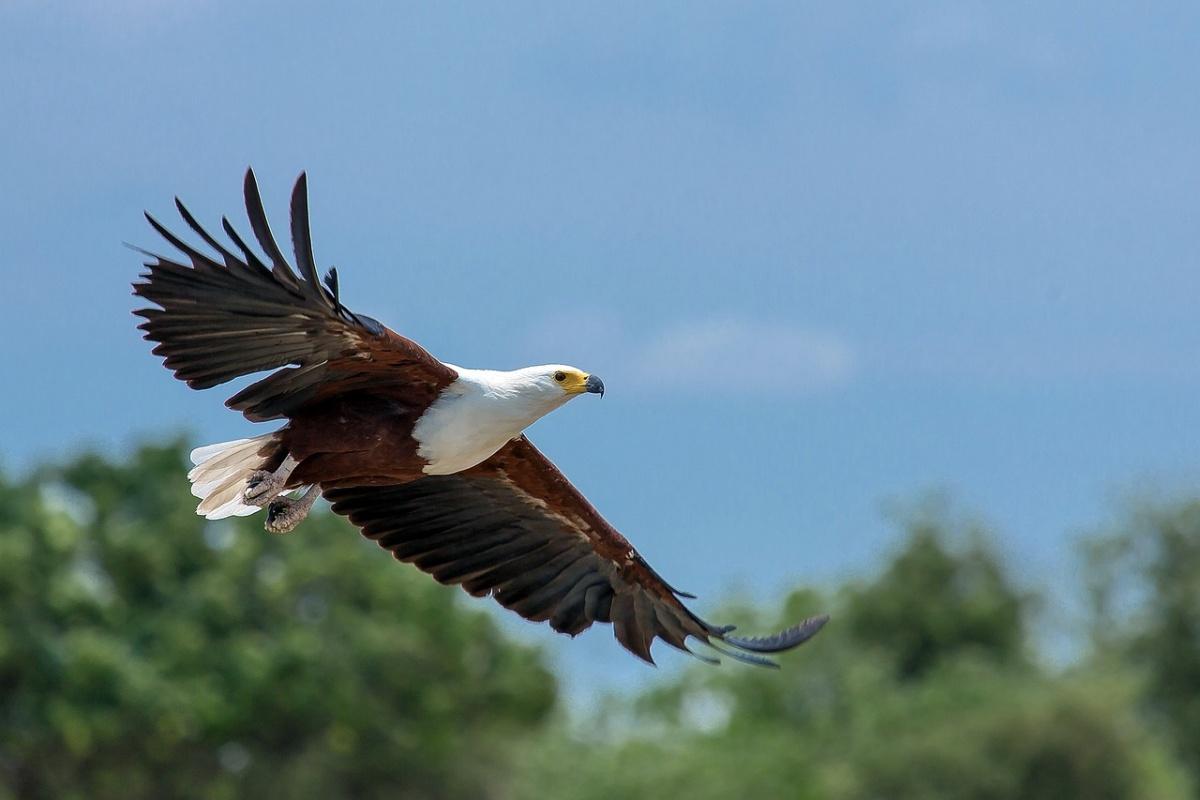
How Many Animals Native to Zambia?
What is the diversity of native animals in Zambia?
Let’s look at the total number of species of Chordata (mammals, birds, fishes, and reptiles).
Total number of animal species in Zambia: 1,668 (14,205 in total in sub-Saharan Africa)
More About Animals in the World!
Loved these Zambia animal facts? Want to see what animals live in other countries?
Then check out these posts:
Or click here to see ALL the facts up on the blog! Spoiler alert: there’s A LOT of them.
Share the knowledge! Click on the buttons below to share information about these native animals of Zambia with your friends, and help them learn more about the world 🙂
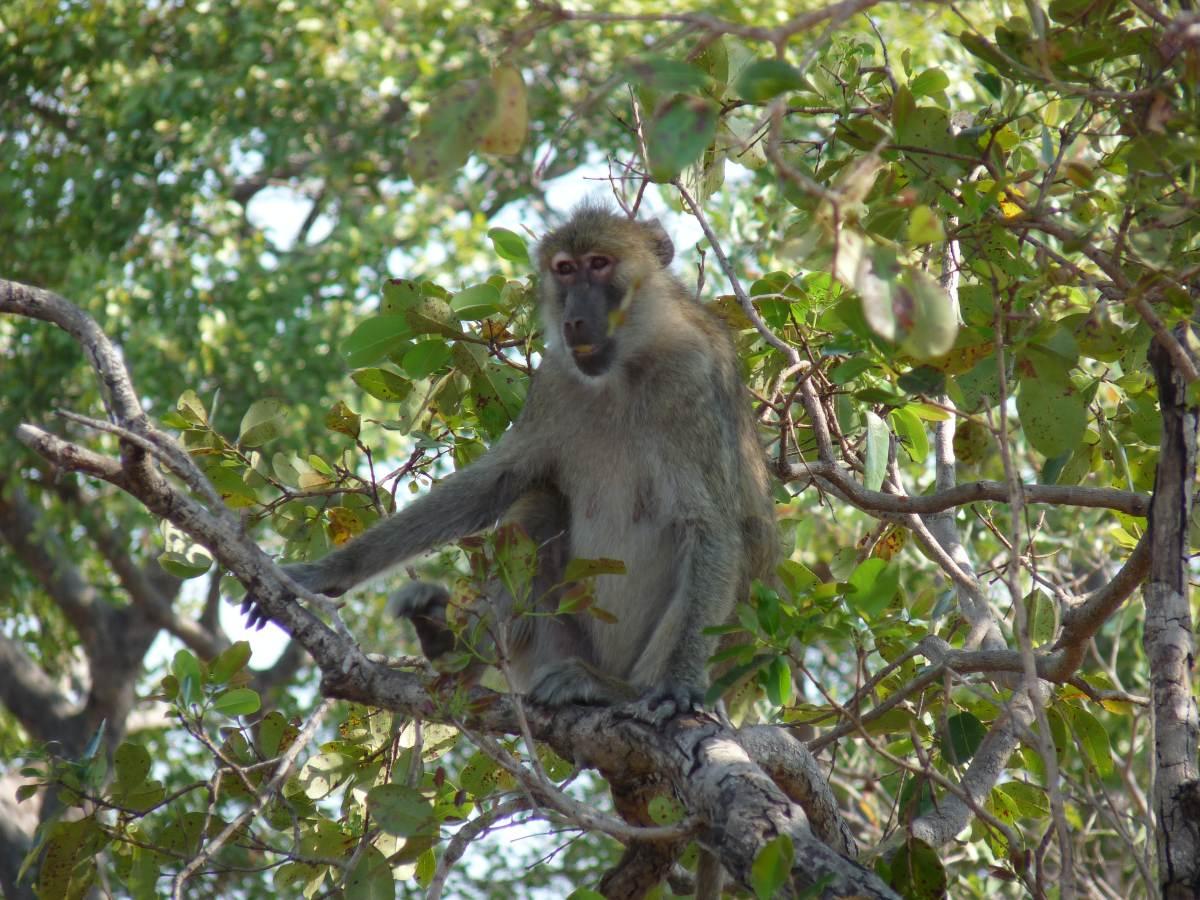
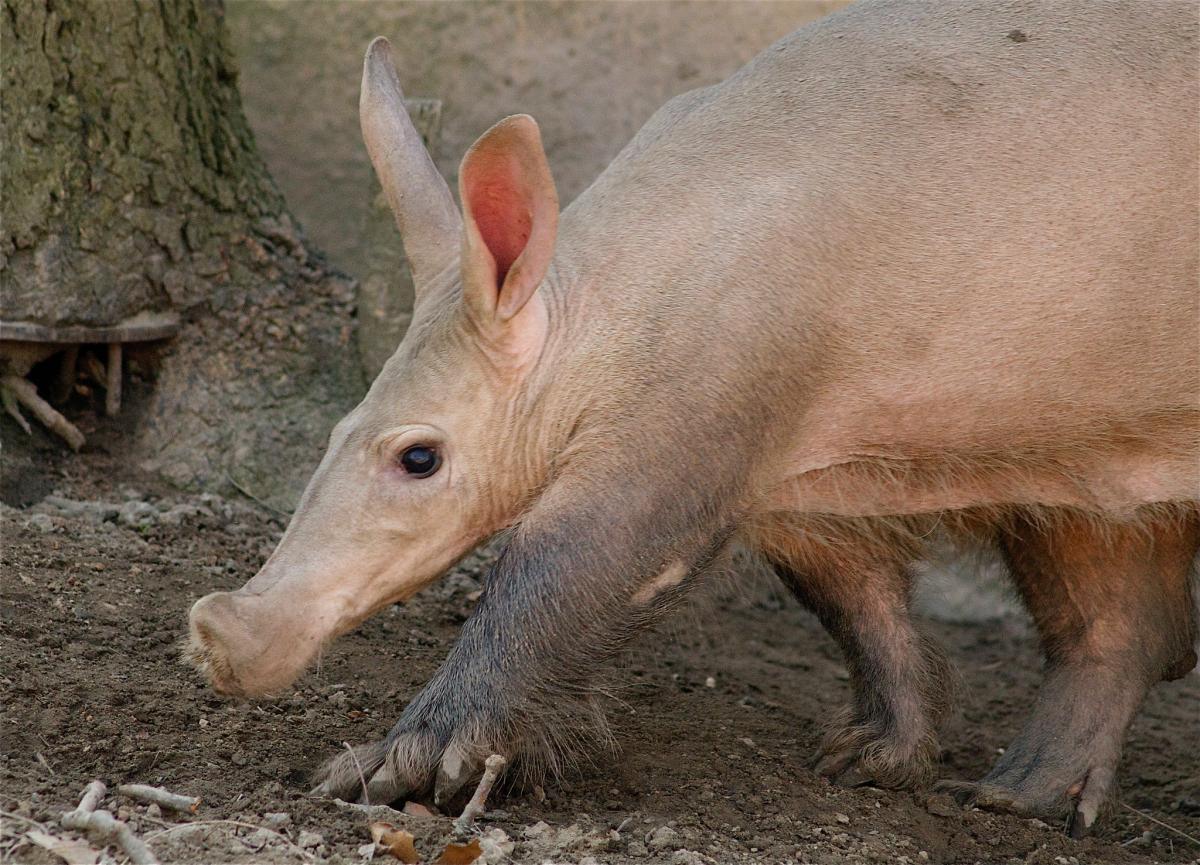
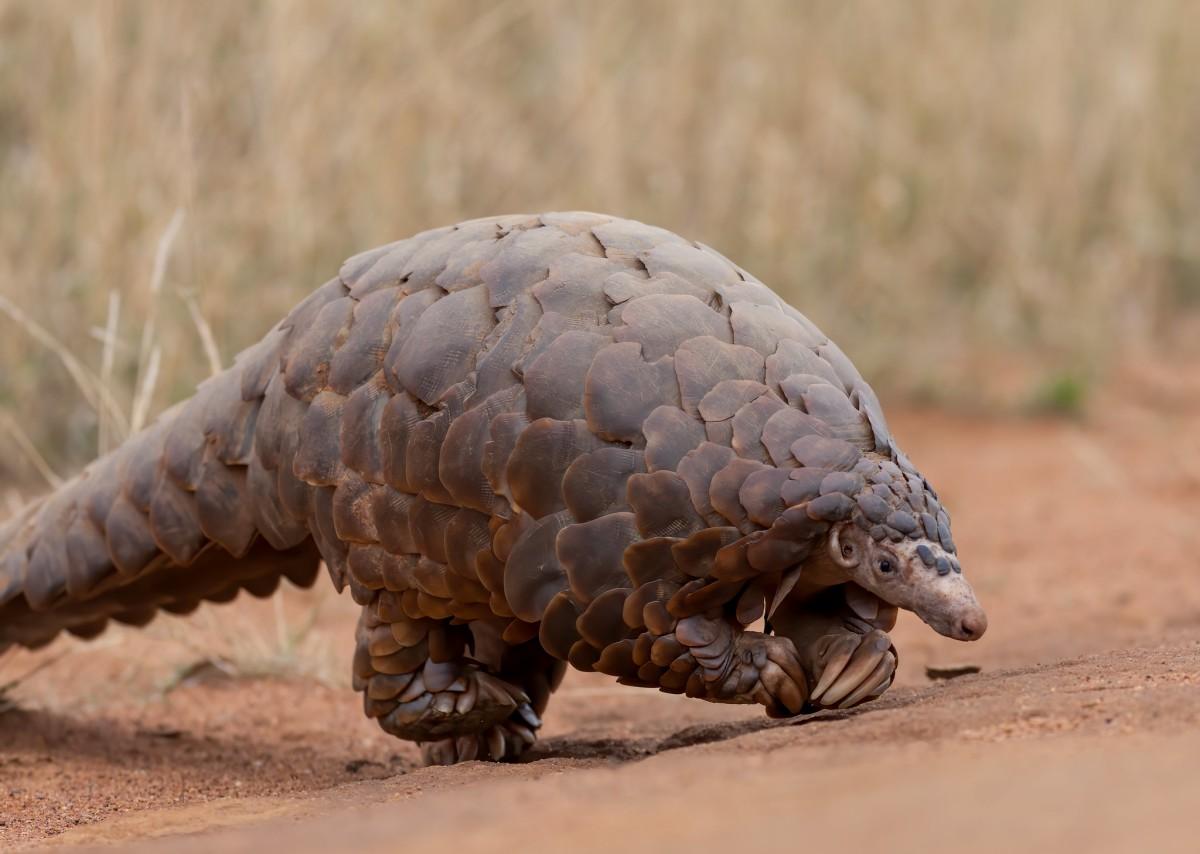

![24 Wild Animals in Mali [Wildlife in Mali]](https://www.kevmrc.com/wp-content/uploads/2022/11/24-wild-animals-in-mali.jpg)
![21 Wild Animals in Sri Lanka [Wildlife in Sri Lanka]](https://www.kevmrc.com/wp-content/uploads/2022/12/21-wild-animals-in-sri-lanka.jpg)
![33 Wild Animals in New Zealand [Wildlife in New Zealand]](https://www.kevmrc.com/wp-content/uploads/2023/01/33-wild-animals-in-new-zealand.jpg)